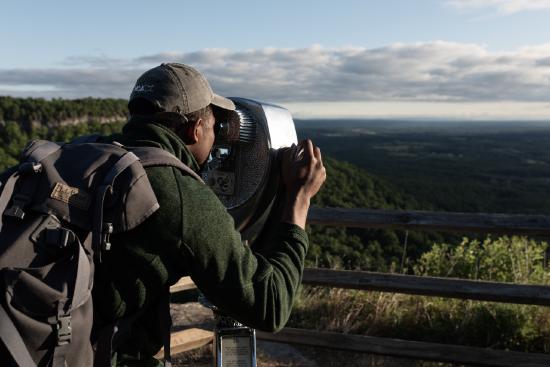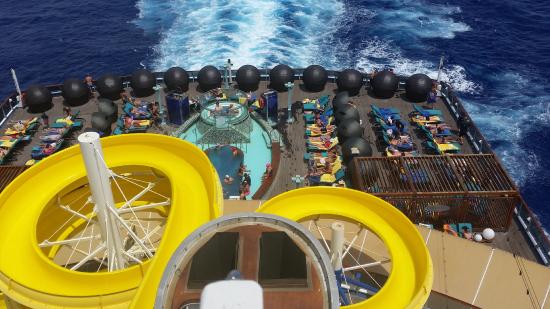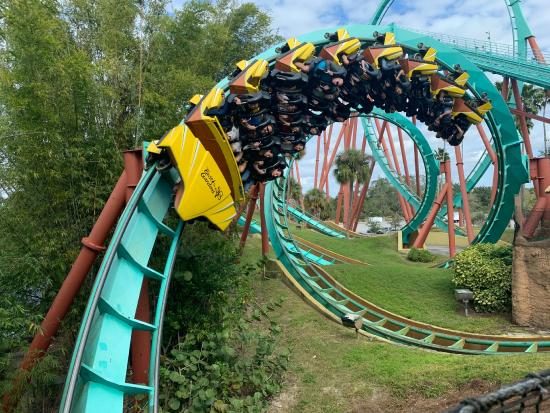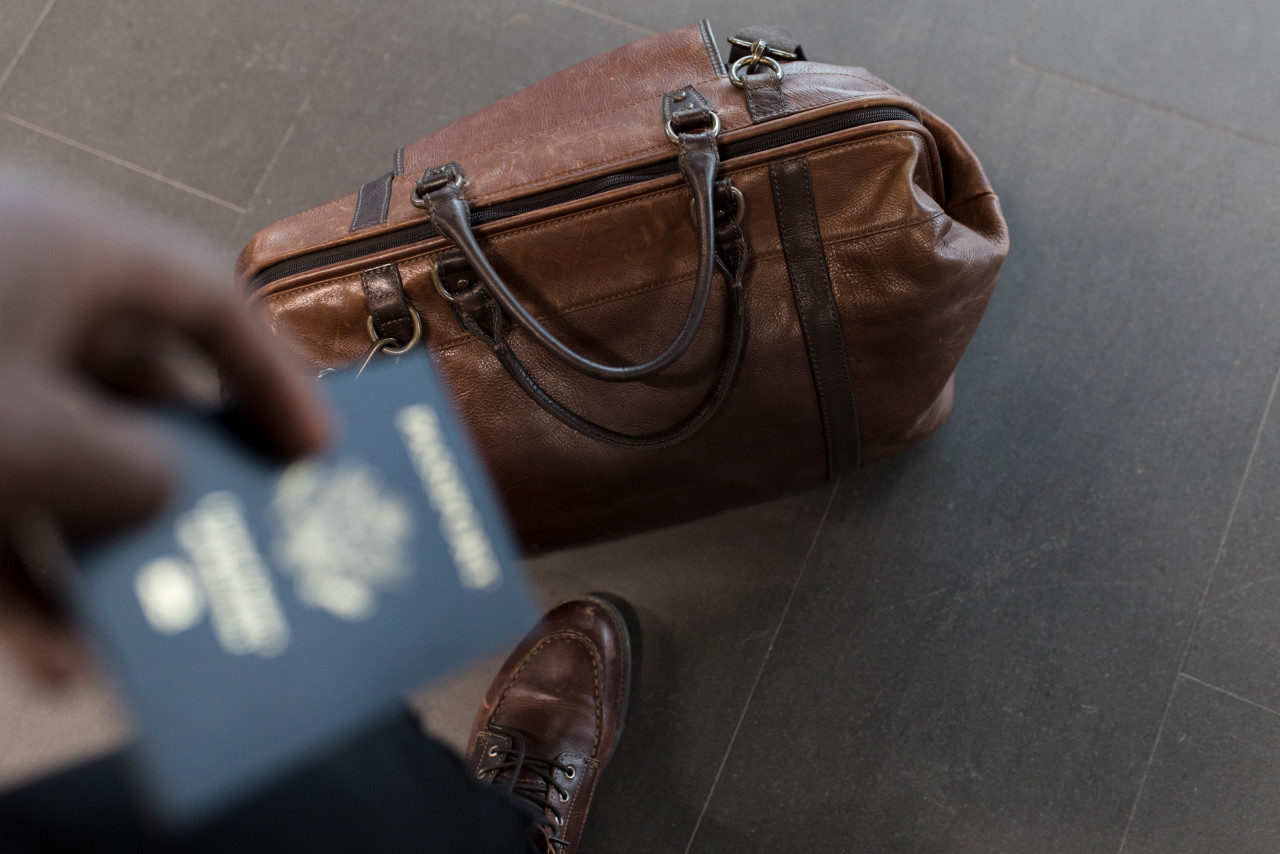2.1: In the Beginning...
- Page ID
- 11100
Tourism is travel with a purpose.
The most common definition of tourism is that: Tourism comprises the activities of persons traveling to and staying in places outside their usual environment for not more than one consecutive year for leisure, business, and other purposes. United Nations- World Tourism Organization
The tourism industry in the beginning, and through the modern-day, owed its development to the ability of individuals to travel safely and their desire for different experiences. The industry’s dependence on these two factors has created its growth and development in certain periods of time as it has led to its stagnation and decline.
The origins of the tourism industry are difficult to determine. Most often, we look to ancient Greece and Rome as the first recording of travel but it is more likely that travel in the ancient world was more common than our assumptions.
The inns established during Roman times were located along Roman roads between 16 and 19 miles apart or a day’s journey. Generally, there would be an inn or Mansiones for individuals on official business. Individuals not on official business would stay in a Cauponae. These establishments were known as habitats for thieves and prostitutes.
With the extensive network of roads in the Roman Empire, travel was commonplace. These roads were well designed and could accommodate carriages and horses. However, travel was more for the purpose of trade, military, or official duties. Travel for leisure and recreation has little reference for us to study.
After the fall of the Roman Empire, travel became limited. A period known as the Dark Ages would see history enter into a period of regional development of city-states that were relatively isolated. Unless an individual wanted to take a religious pilgrimage, there was no need to travel beyond one's immediate home and region.
The Renaissance would spark the human experience in dramatic ways impacting art, science, and business enterprises. In turn, travel would become more common throughout Europe and would lead to a resurgence of human interest to travel away from their home.
The Modern Era
The Modern Era would begin in the mid-seventeenth century when young nobility and the wealthy would go on a tour through Europe. Generally, these sojourns, known as Grand Tours, provided wealthy travelers with an educational experience of the roots of Western Civilization.
The Grand Tour fell out of fashion, as the known world at that time expanded with European colonies being established around the world. As new and distant worlds were being discovered the development of rail and steam systems of transportation came into common use opening travel to a mass market.
The purpose of travel during these times was not generally for the leisure activities we equate with today’s industry but for relocation away from tyrannical systems of governments and religious persecution to more open societies.
As people became more comfortable with travel, the concept of travel for leisure and recreation became more attractive. At first, the leisure experiences were generally located at hot springs where visitors could refresh in the warm waters of a natural spring.
Eventually, people became comfortable with visiting distant relatives and other natural vistas and pristine waters. These traveling experiences were the forerunner of today’s modern tourism industry.
Major Tourism Sectors
Transportation
Transportation innovations would foster the development of the tourism industry. From Roman roads to the rail and airline modes of today, transportation has been and will continue to be a vital component of tourism.
Most notably, the modern interstate highway system pioneered by Germany and adopted by the United States in the 1950s created avenues that mobilized a mass-market and led to the development of tourism venues. Additionally, in the United States, the introduction of the Boeing 707 airplane became the preference of the traveler surpassing rail or bus travel making air travel safe, convenient, and affordable.
Europe’s well-developed rail system would continue to attract travelers because of the relatively short distances between destinations and the addition of high-speed trains. In China, MagLev trains reach speeds of 362 miles per hour. This innovation provides for safe, convenient, and speedy travel.
Transportation evolution is by no means slowing down. The rapid expansion of the airline industry provides access to many destinations in third world countries with premier tourism attractions. The competition of low fare cut-rate airlines has opened up tourism attractions to individuals who live only within an hour or two of a destination.
These travel expansions are not without consequences and have impacted the infrastructure of transportation hubs such as airports and rail stations creating congested freeways and straining related service providers—taxis and bus lines.
Accommodations
Travel to tourism venues depends on ample lodging and food and beverage operations. The payment for these services creates a multiplier effect, where money that is spent ripples through the local economy two to five times. For example, money paid for hotel accommodations is paid to a hotel employee who buys food from a local grocery who has purchased goods from a local farmer.
Effectively, a tourism product is an export attracting money from outside the country. Not surprisingly, local governments are keen to provide support for the development of their infrastructure to attract the development of lodging and food and beverage services.
Not all the money that is spent in a tourism destination will stay in the community. A portion of the income will be used to purchase items and services from outside the community. This loss of revenue is termed leakage.
National Parks
The United States National Parks encompasses 62 protected regions. In 2017 over 84 million tourists visited the National Park System. State and local governments have also created their own regional park systems.
National Parks are located throughout America usually in pristine natural environments including underwater sites and sites of historic significance. The emphasis on the park system is preservation for future generations.
The development of the National Parks system in the United States has inspired other countries to develop their park systems by providing infrastructure access to venues and the related necessities of water and sewage systems.
Argentina created a small rail service and a steel walkway for visitors to visit the Iguazu Falls. These additions made the visit safe and accessible. Argentinian’s management of Mount Aconcagua Park is a model for mountaineering adventures. The closely regulated park charges an entrance fee that will pay for a helicopter to rescue stranded hikers. Additionally, they limit permits and closely monitor the water and sewage removal.

Photo by NappyStock on Nappy
Adventure Tourism
Robust development in the tourism industry is the Adventure Tourism segment. With individuals choosing healthier lifestyles and living longer, a new tourism segment is developing in areas once considered too dangerous or distant to experience.
There is no better example of the impact of Adventure Tourism than the Mount Everest venue. The highest peak in the world at 29, 029 feet, Mount Everest attracts mountaineers from around the world. This venue on the border of Nepal and Tibet is an example of the impact the tourism product has on a third world country.
Initially, the mismanagement and lack of infrastructure impaired and spoiled this venue. Piles of trash littered the mountain. The lack of wood created deforestation that caused flooding below the mountain. With more progressive management and higher fees to enter and climb the mountain, the community was able to continually attract mountaineers while addressing the needs of their community. The impact of spending by these visitors created revenues to build a medical clinic and improve the living conditions of the workers (Sherpas) who worked on the expeditions.
Cruise Lines
One of the most expansive tourism segments is the Cruising industry. From inland riverboat cruises in Europe and North America to the island hopping offerings in the Mediterranean and Caribbean, the cruise industry has become a mega-tourism offering.
Tourists who want to travel comfortably, visit a variety of locations, and not have to change sleeping accommodations, have fueled the exponential growth of the cruise industry. The industry has expanded its market segments beyond individuals with higher incomes to provide cruises that attract the mass-market segment.
The rapid expansion of cruise line offerings is the result of ships operating under foreign jurisdictions to avoid taxation, restrictions on casino gaming, and compliance with labor laws required by ships flagged in the United States. Consequently, the majority of cruise ship employees are recruited from third world countries.

Gaming
Gaming is a tourism product with casino gambling being offered as the core or center product surrounded by a variety of ancillary or supporting products—food, beverage, shopping, and other amusements.
This product is unique in the hospitality industry because it offers guests a total experience within their facility. These all-inclusive tourism products are known as Destination Resorts. They are growing in popularity and are primarily found in cities that are known for gambling, such as Las Vegas and Atlantic City, and resort locations.
Theme Parks
Theme parks can trace their origins to Copenhagen and the opening of Bakken in 1583 and the neighboring and more famously known park of Tivoli, which opened in 1843. Tivoli was visited by Walt Disney and provided the inspiration for Disneyland.
The Disneyland theme park would become a model for parks. The dual Disney concepts and “Lands” of an imagined and glorious past with the dreams of the future removed people from their cares and troubles of the present. This marriage of concepts would create a total tourism experience for visitors and would make Disneyland the most popular of all tourism products.
Disneyland’s comprehensive experience engages visitors on many levels. The visual and auditory levels are the most obvious but they also provide, for example, vanilla scent machines that spread the fragrance by the ice cream shop.

Photo by Stephen Hateley on Unsplash
Career Opportunities
Hospitality tourism products are similar to other hospitality offerings and require attention to career development. Your selection of a tourism provider to invest your time and grow your work experience is an important first step. You should consider if your selection will provide the fundamental learning opportunities on how to motivate and empower workers. These learning opportunities strengthen your management skills and leadership development.
Additionally, tourism venues are normally located in pristine places of nature and attract guests that are happy and fun-loving. The continual contact with the tourist vacationer is a key element in the selection to work in these types of venues.
Key Tourism Organizations
There are many organizations that promote tourism products on the local, regional, and international levels.
The premier international agency for tourism is the United Nations World Tourism Organization (UNWTO). The mission of this organization is to promote tourism as a driver of economic growth and environmental sustainability.
UNWTO includes 158 countries and over 500 affiliate organizations that seek to grow tourism products throughout the world. Tourism is seen as a prime vehicle for the peoples of the world to interact in a positive and productive manner that promotes world peace.
The United States Travel and Tourism Office advocates for tourism throughout the United States. They promote programs, lobby Congress, and serve as a repository of facts and information on the industry.
Regional promoters for tourism are generally funded by local governments that collect the hotel or Transient Occupancy Tax (TOT) levied on hotel guests. This hotel tax, sometimes referred to as a bed tax, is apportioned with the majority of the funds going into the local general fund and a smaller portion being used to support tourism programs such as convention and visitor bureaus.
One of the most dynamic tourism programs is the Las Vegas Convention and Visitor Authority (CVB). This organization is well-funded and a primary driver of the tourism offerings in Las Vegas. Their web page provides a fascinating insight into the duties and responsibilities of a regional tourism promoter.
Tourism Dollars
The impact of the tourism industry on the world economy is staggering. In 2017, the tourism industry directly contributed to 3.2% of the world’s GDP (Gross Domestic Product) — equivalent to the size of the United Kingdom’s economy. If we consider the indirect and induced impacts of tourism, the share of tourism product offerings expands the world’s GDP to 10.4%.
Tourism Dollars Impact on Industrialized States
Industrialized nations welcome the tourism dollar. The financial impact to local economies varies from little noticeable effect to a major local economic contributor and even a critical sector supporting the community.
Depending on the footprint of the tourism sector in a local community, the social-cultural effects are limited because it is likely the visiting tourists are from other industrialized nations and the economy—save a few enclaves like Las Vegas and Atlantic City—have a wide range of other industries for financial support. It may be noted that tourists from industrialized countries assimilate into the community without adversely affecting the society either socially or culturally.
Tourism Dollars Impact on Third World Countries
In contrast, third world countries are greatly impacted socially and culturally by tourism venues in their communities. The primary industry for most third world countries is agriculture and small manufacturing enterprises. Consequently, the tourism dollar is, in many countries, the most attractive and available export.
Tourism venues in third world countries that are poorly planned may destroy the very tourism attraction itself. The country of Belize is a prime example of the challenges a third world country faces as it attempts to develop its tourism offerings and not degrade its natural attractions.
The Belize tourism export, directly and indirectly, is estimated to be 32% of the country’s GDP. This sizable portion of their businesses challenge the Belize government to grow their economy but protect the primary tourist attraction of the coral reefs located along their coastline. These reefs are very attractive to tourists that snorkel and enjoy the ocean. The reefs are threatened by a growing tourism market that overwhelms the infrastructure causing human sewage to enter the ocean and threaten the pristine attributes of the coral reefs.
Another unsavory consequence of the impact of tourism is the effect the tourists have on the society and culture of the local population. All tourism venues suffer leakage or the loss of tourism dollars to vendors outside their community. For example, a hotel in need of sheets for their beds needs to purchase these items from a manufacturer outside of their community. These dollars are not considered part of the multiplier effect that, as previously noted, are the dollars that are left to circulate throughout their locale.
When a tourism venue suffers a great deal of leakage and a diminished multiplier effect the impact on society and culture will be substantial. Local people will resent the tourist and in extreme cases give rise to crime and social unrest. Cultural impacts will see the diminished respect and loss of people’s attitudes and beliefs.
Culturally, the impact may be a detriment when the local or indigenous people abandon their cultural heritage and adopt the behaviors of the tourist—this is called the Demonstration Effect. The values and related beliefs in a culture may be changed and usually not for the better. The rise of sex tourism is an example of this phenomenon.
Key Operational Processes
The tourism operational processes are varied and wide-ranging. From the simple tasks of collecting revenue to providing the tourism experience, the processes are fairly routine and the introduction of technology has made it simpler.
The key driver of the development of operational processes is the growing familiarity tourists have with their own hand-held communications be it either an iPhone or Android. Tourists are becoming more reliant on these devices in their daily lives and tourism venues are responding by providing robust interfaces to support the tourist experience.
Technology has streamlined revenue collection, ticket issuing, and providing information. These trends are welcomed attributes and foster the ever-expanding tourism industry. A traveler can easily book a flight to another continent, make a hotel reservation, and book a tourism excursion from the comfort of their home.
Operationally, the tourism provider has many responsibilities in directing and managing a venue. The key concerns for the manager are to have an eye for the details of the experience, organize the operational processes so there are no obstacles encountered by the employees, and communicate to employees in a manner that supports their performance.
There are many details in the tourism experience that need attention. Walt Disney understood that keeping your employees focused on the details throughout their encounters with the tourist is a critical task of management. The challenge was to deliver this message to his employees. He did this through his actions. For example, on a daily basis, he changed flowers close to the Opera House on Main Street. Visitors would not notice that the flowers had been changed from the day before. The changing of flowers was for the employees and showed them the length he would take to demonstrate the importance of attending to details. He understood that actions speak louder than words.
Organizing the service process is the next key operational task of management. This task begins with providing a facility that is designed for service, is uncluttered, and provides the necessary equipment or tools to execute the process.
Finally, communication both verbally and non-verbally to staff binds the organization together, supports the service culture, and makes work fun.
These actions support the execution of the key operational processes and will drive and enhance the overall culture of service in the employees.

Photo by NappyStock on Nappy
Career Opportunities
Career opportunities in tourism venues are wide-ranging without a definitive or well-worn path into upper management. At the core of career-development is the professional’s ability to understand the tourism visitor. Developing an understanding of their wants and needs starts with an entry-level service position. This experience affords the professional “field experience,” that will be fundamental to their time as a manager and later as a leader.
Education is another key element in career development but by no means the only experience needed for advancement. There is a myriad of college-level classes in Recreation and Tourism that fast track an individual’s development.
At the core of any hospitality career, is an interest in people and a sincere desire to be of service to others. This attitude promotes success and is the one key element shared by industry professionals
Interview Questions for a Tourism Professional
-
What is the best part of your day?
-
What advice do you wish you had given yourself at the beginning of your career?
-
What steps should an individual entering this career take to be successful?
-
How has the tourism industry changed?
-
What three attributes do you seek to develop in your staff?
-
How important is culture in your organization?
-
How are tourists alike and different from their normal selves?
-
What are the major tourism trends after the pandemic?
-
What goals do you wish to achieve in your life?

